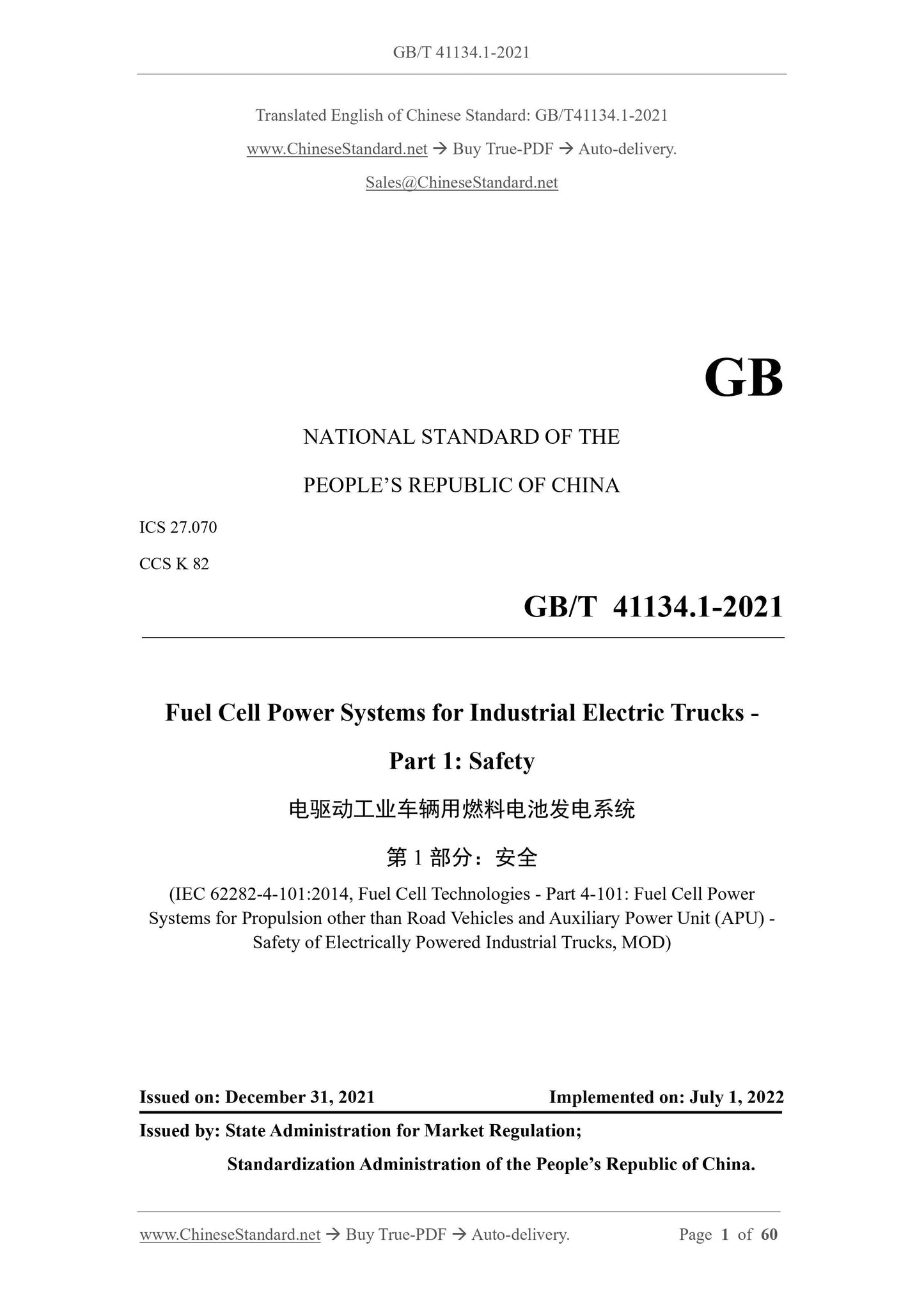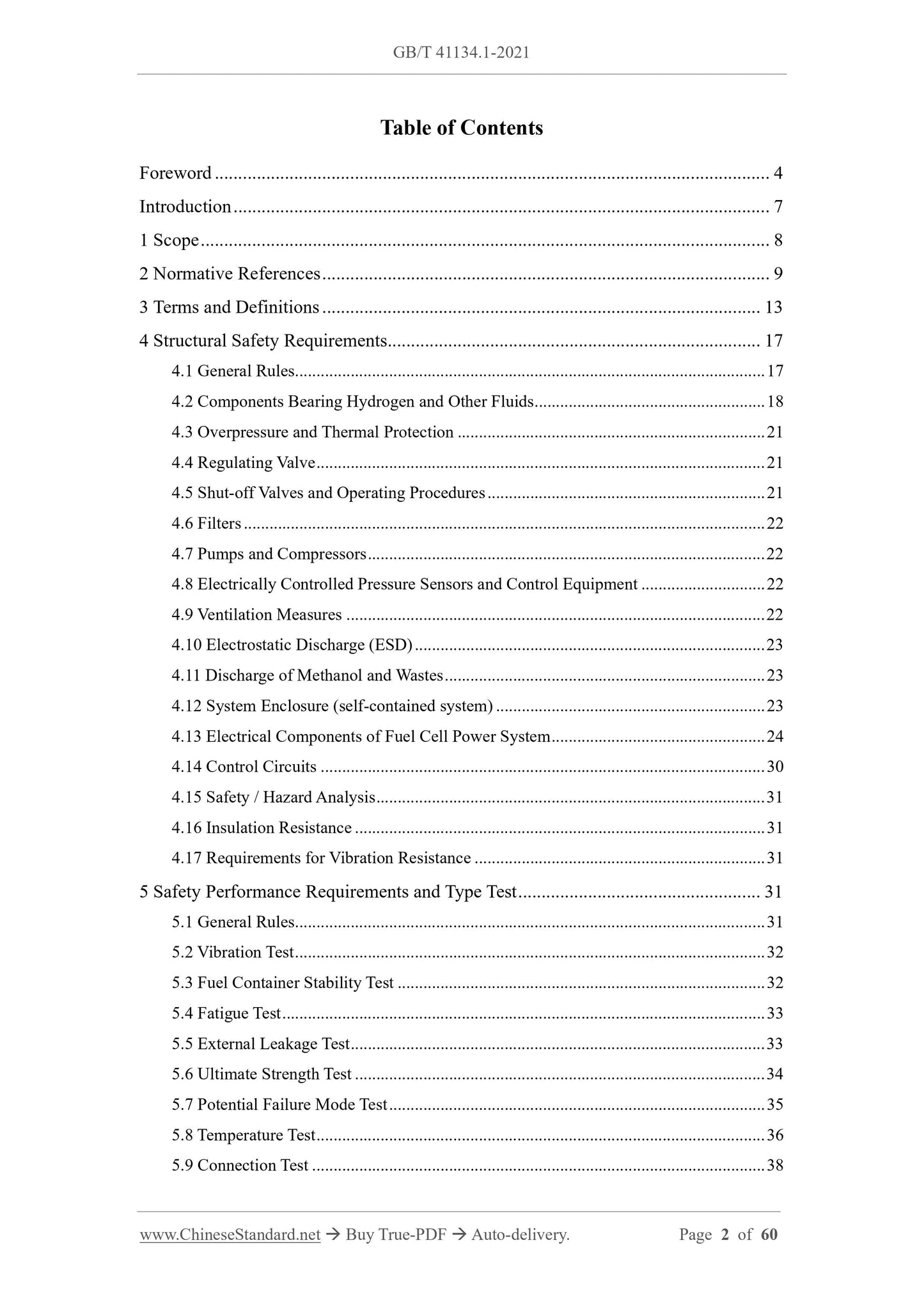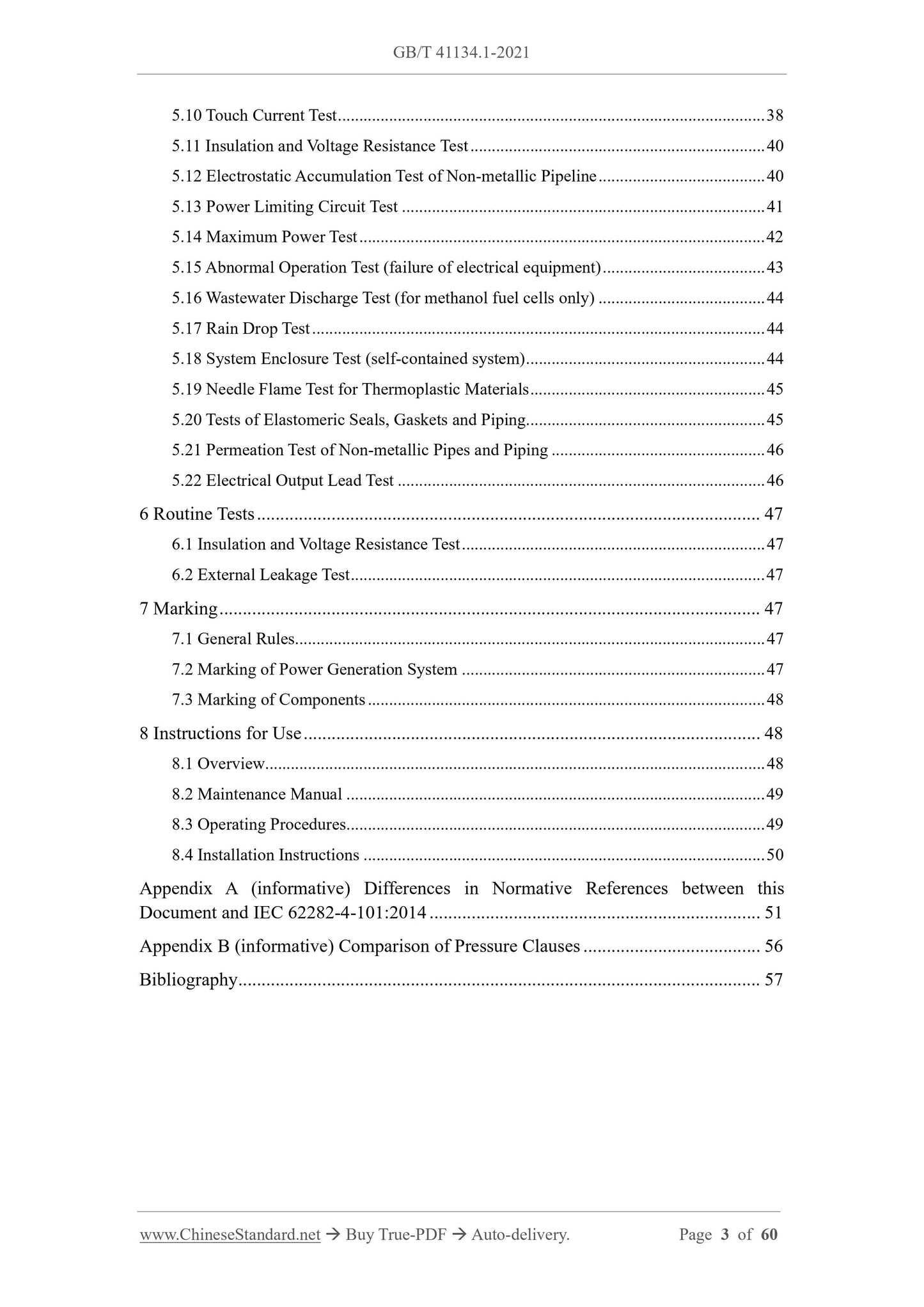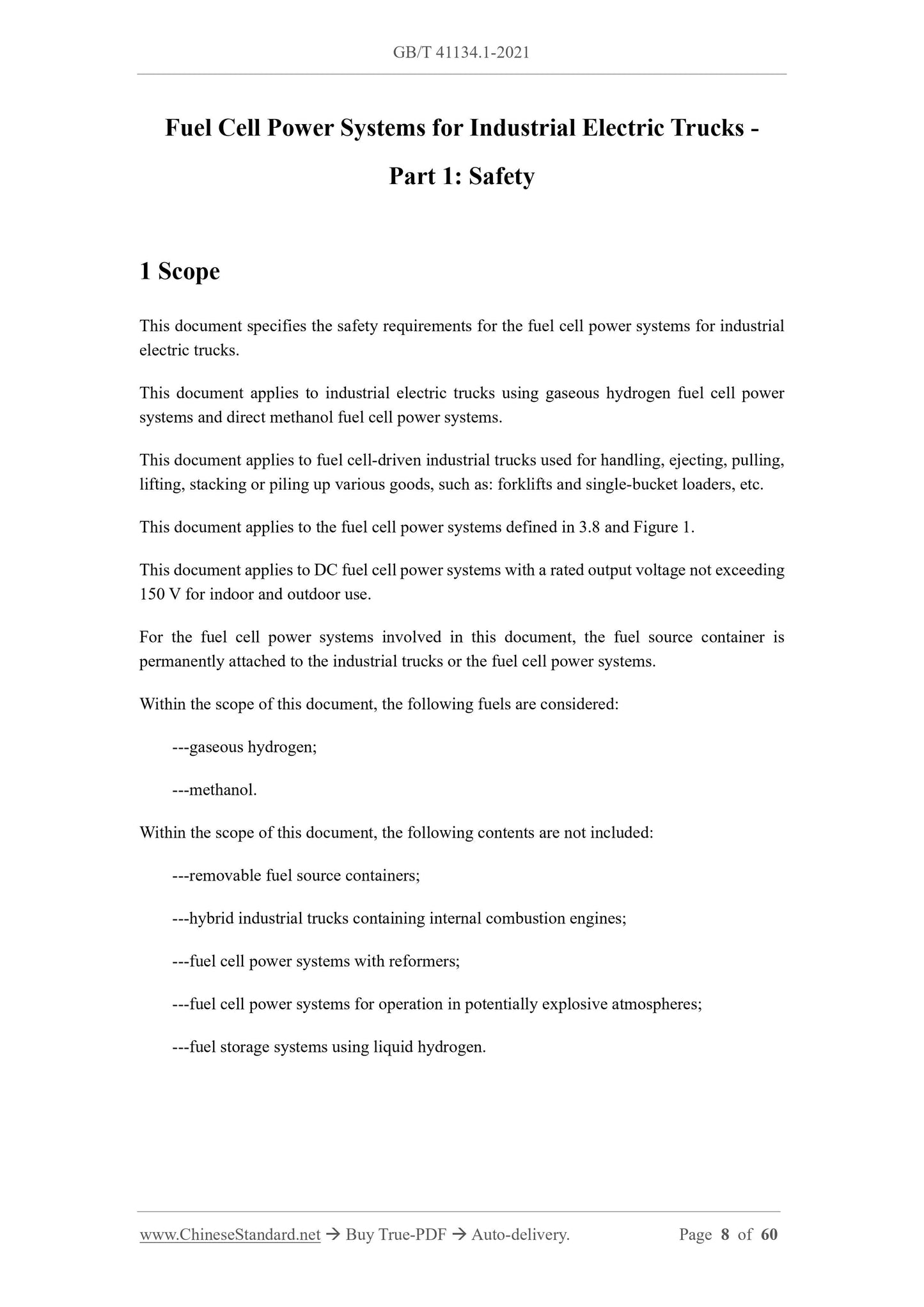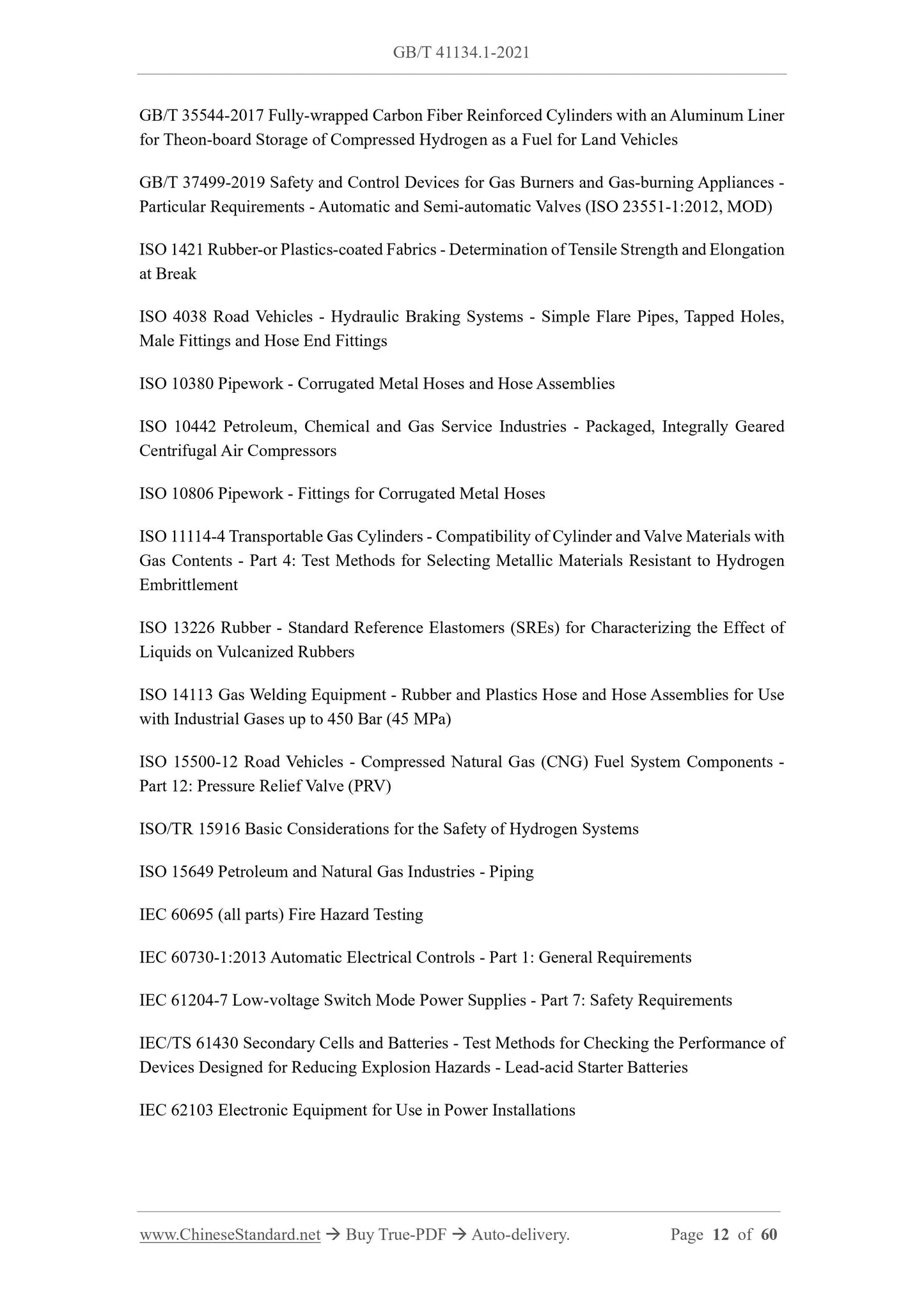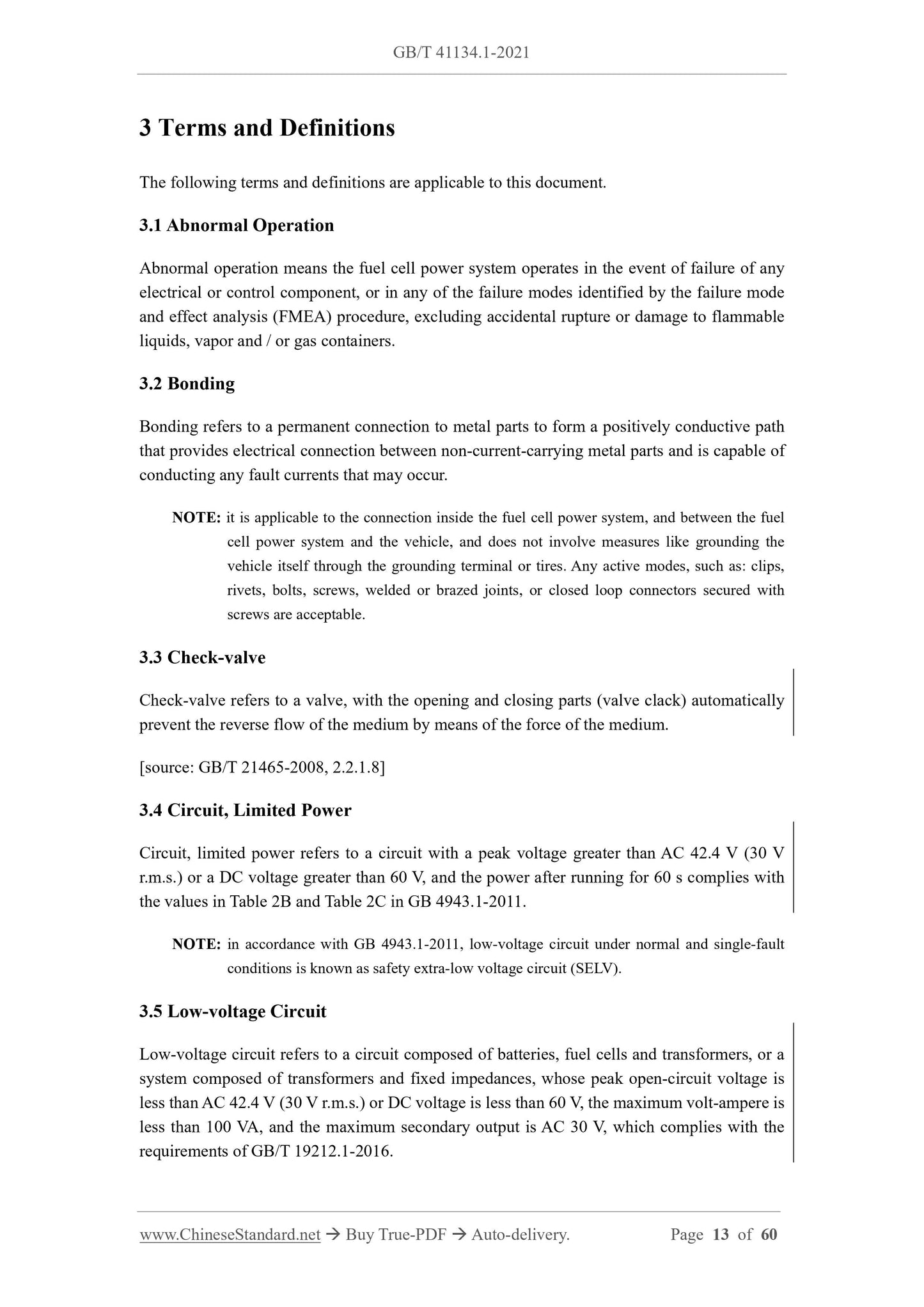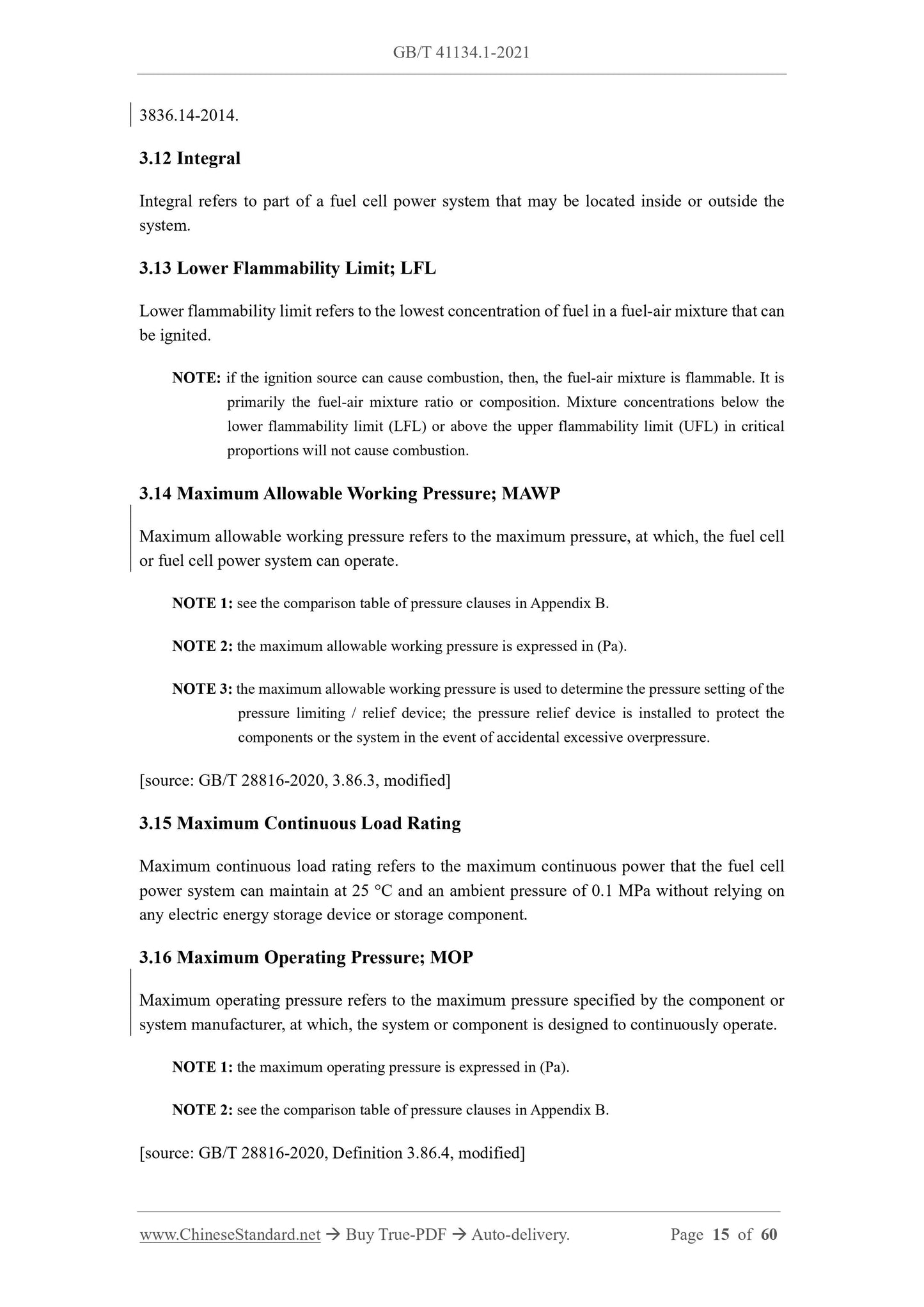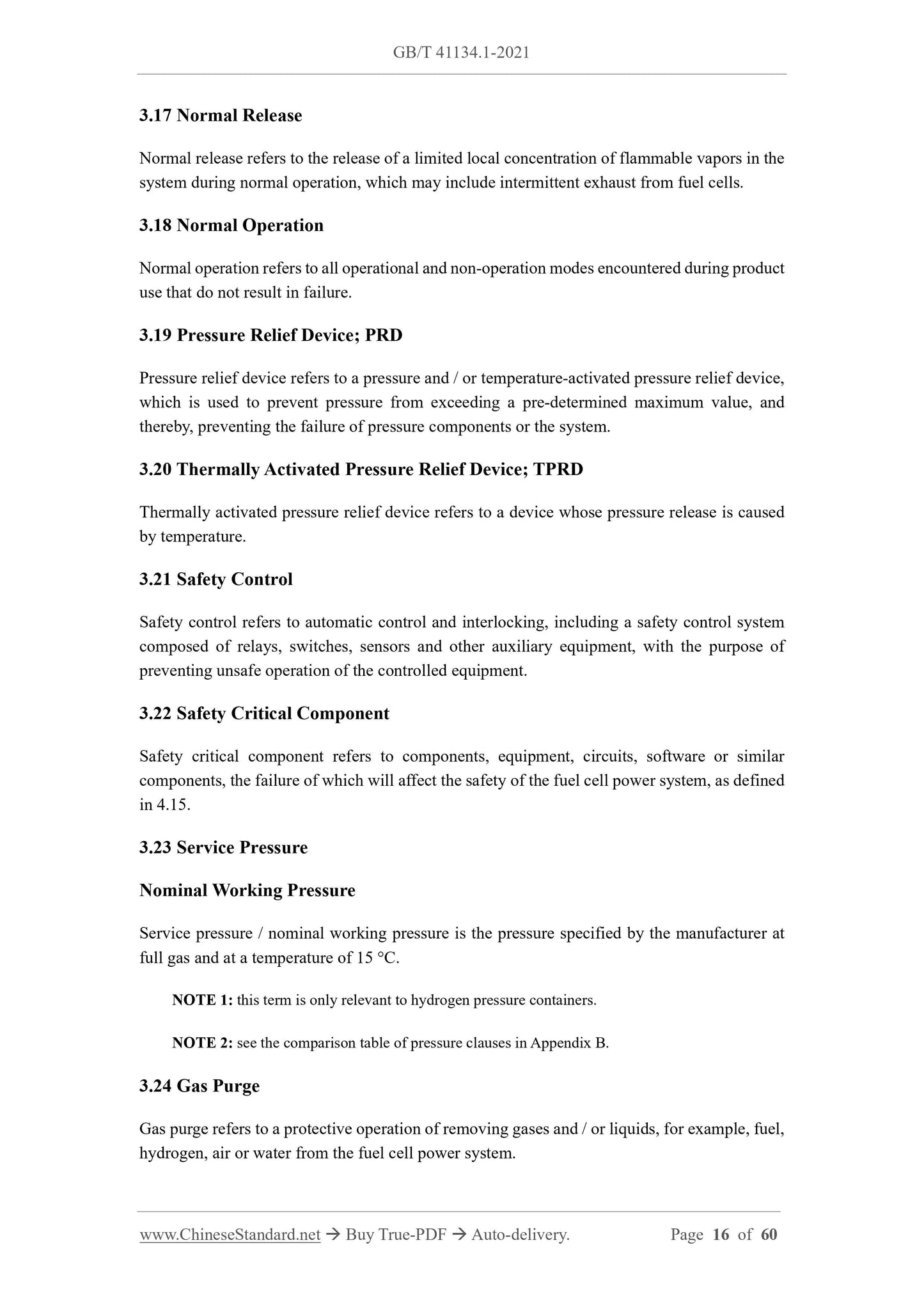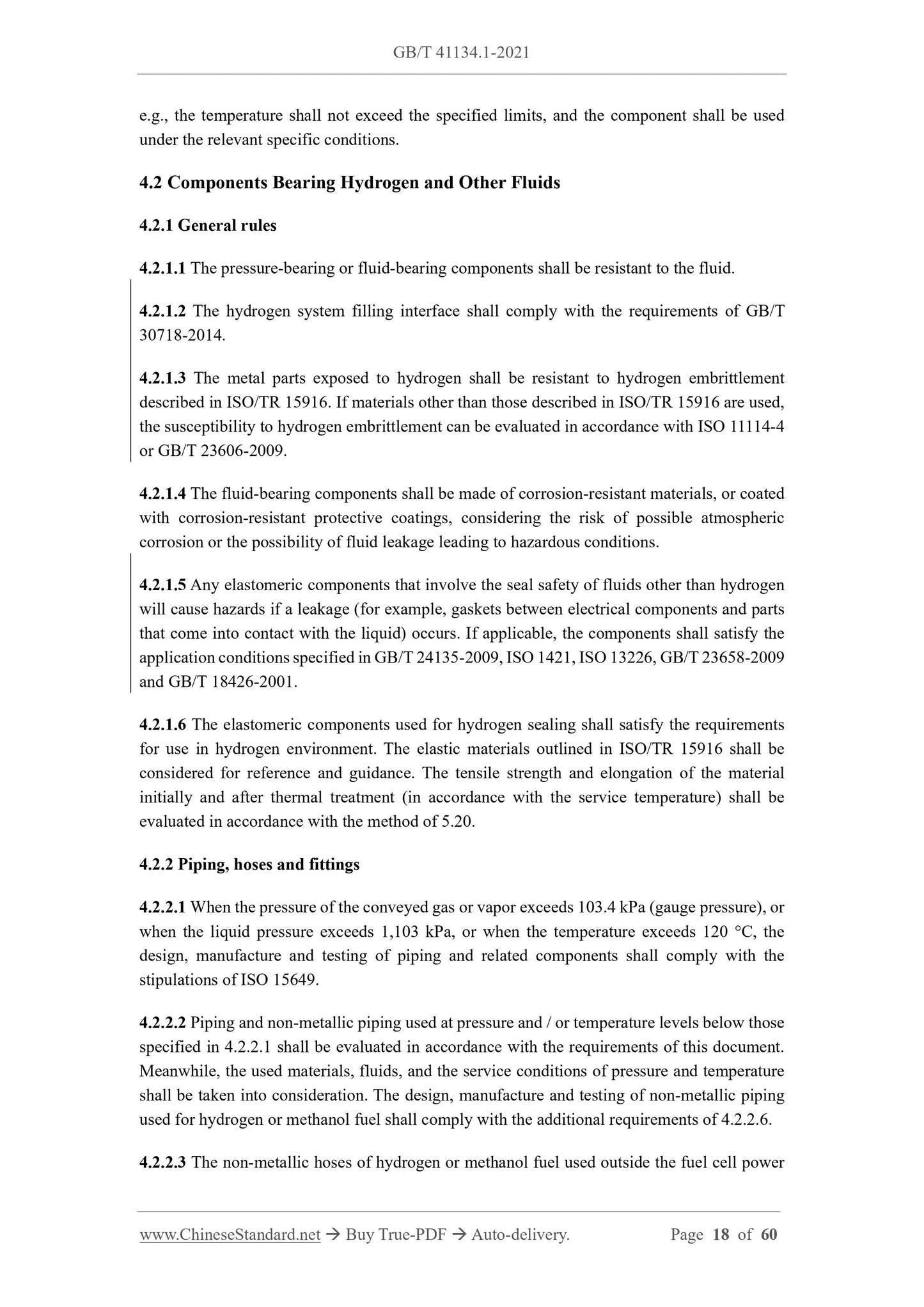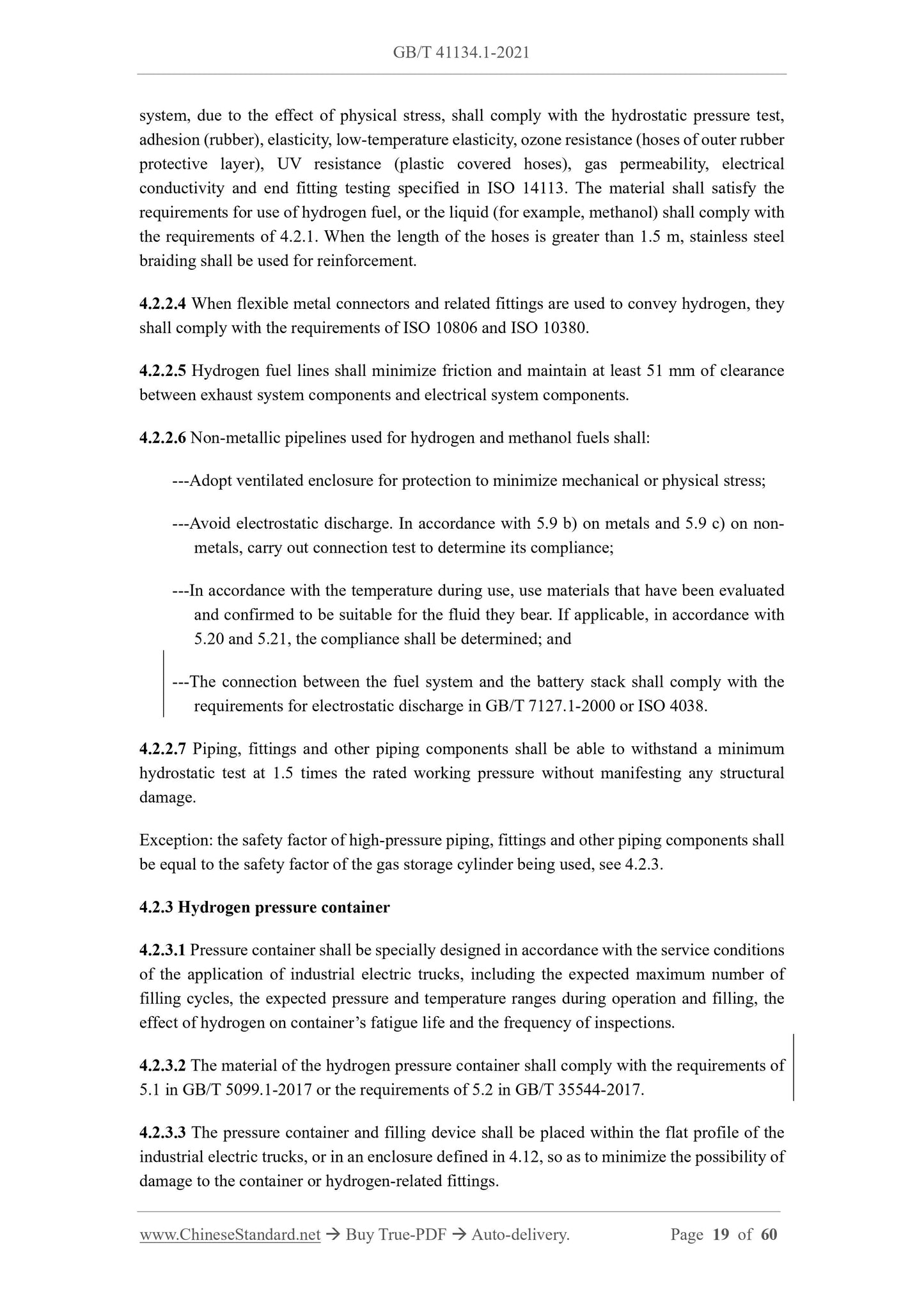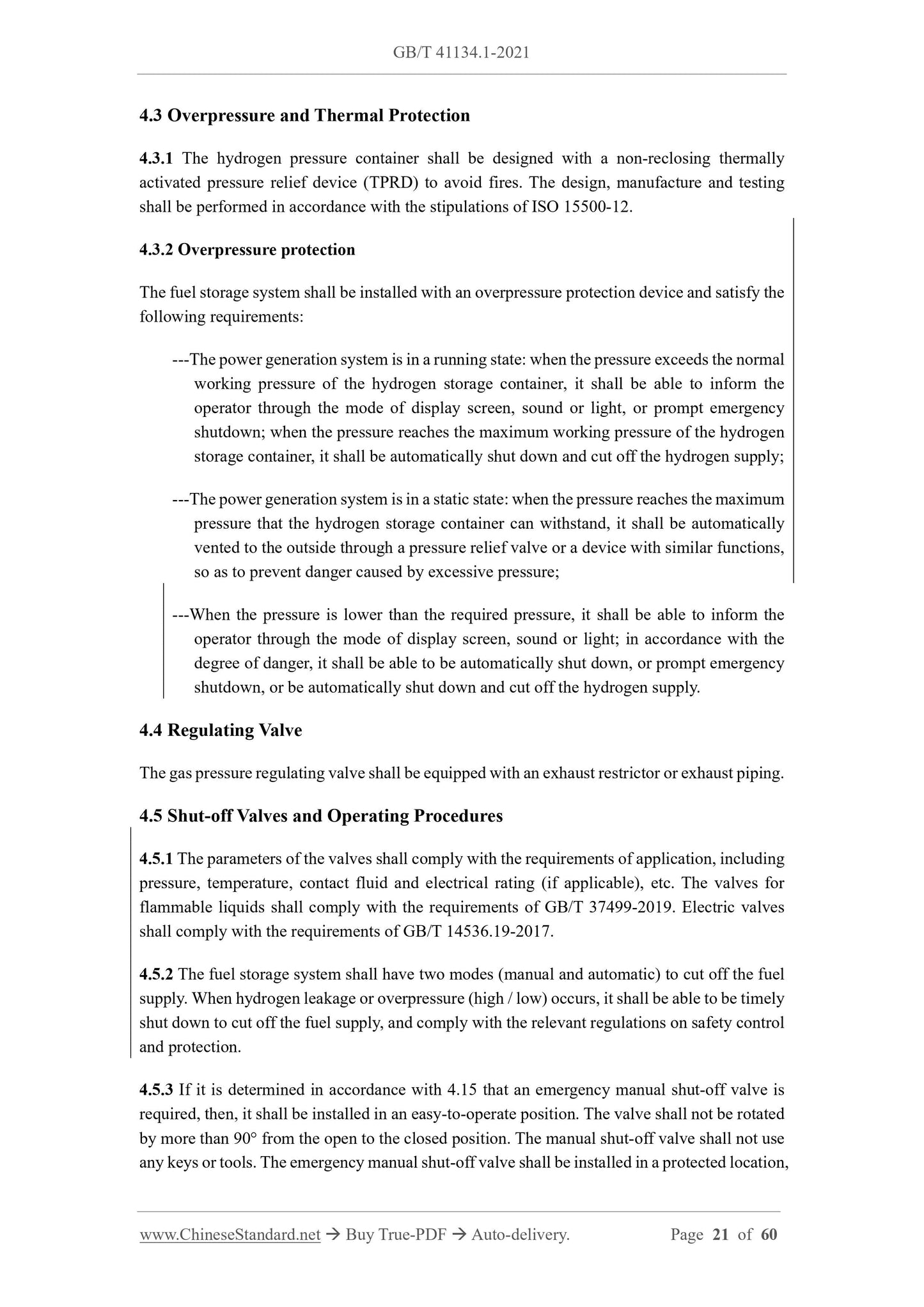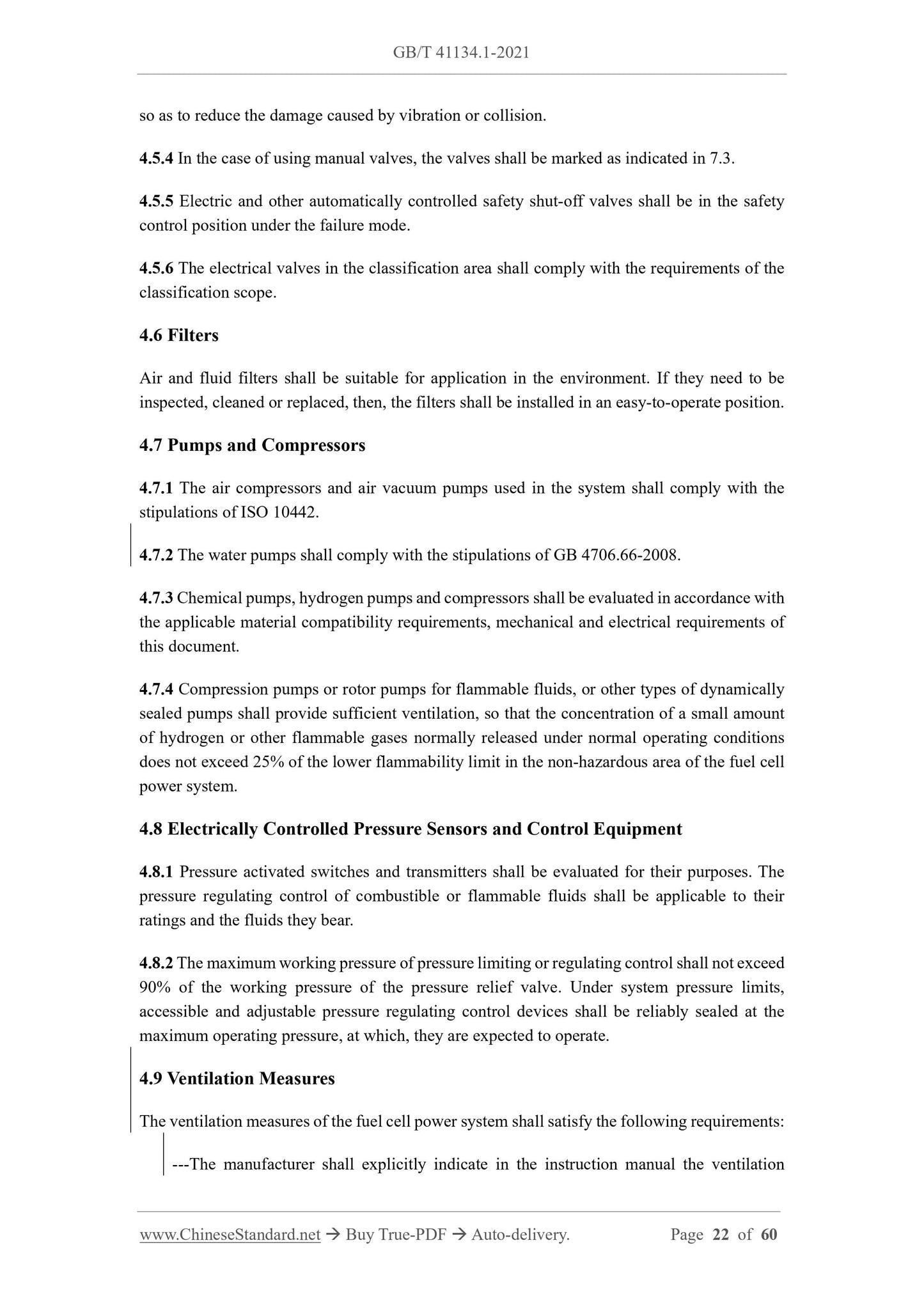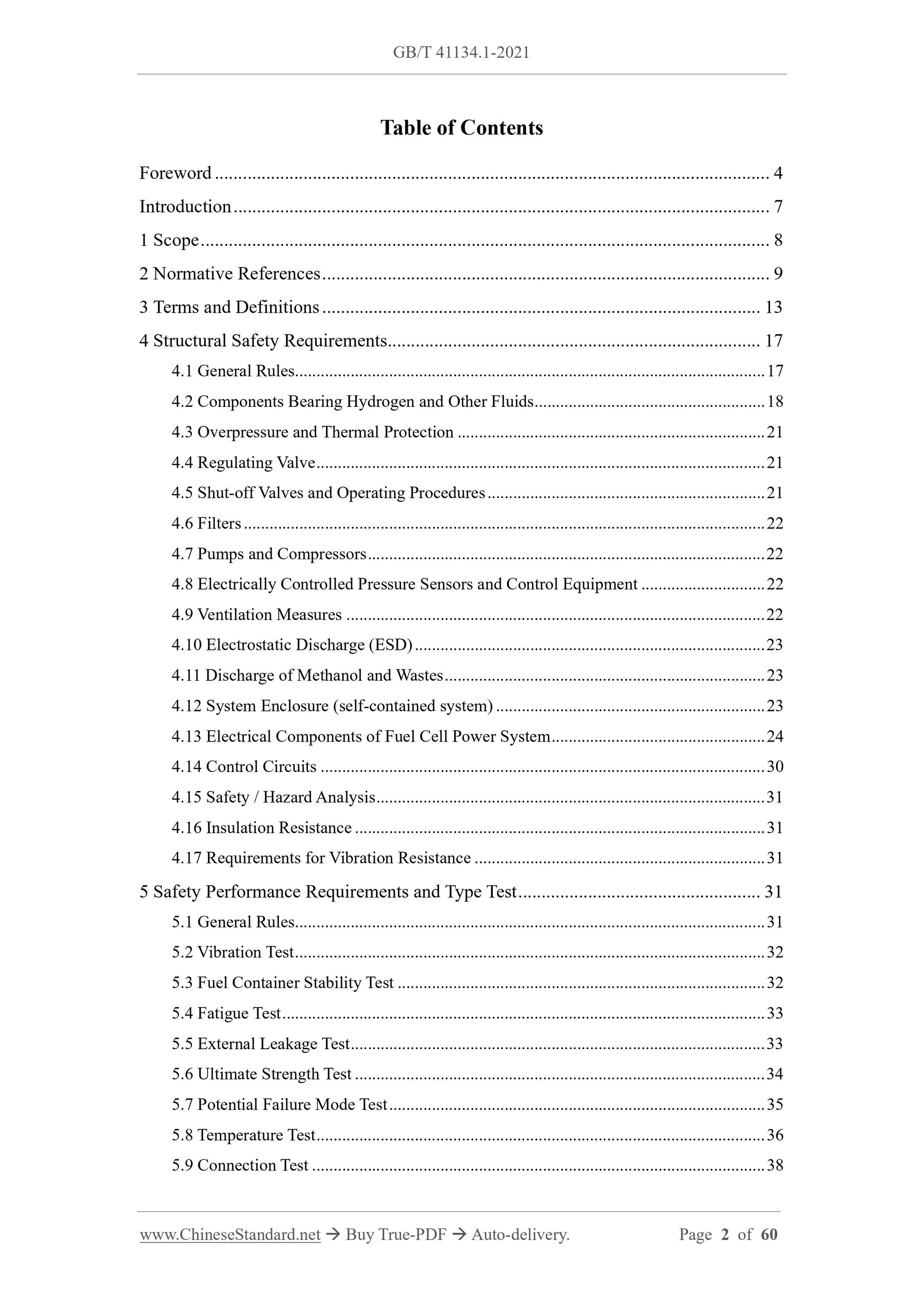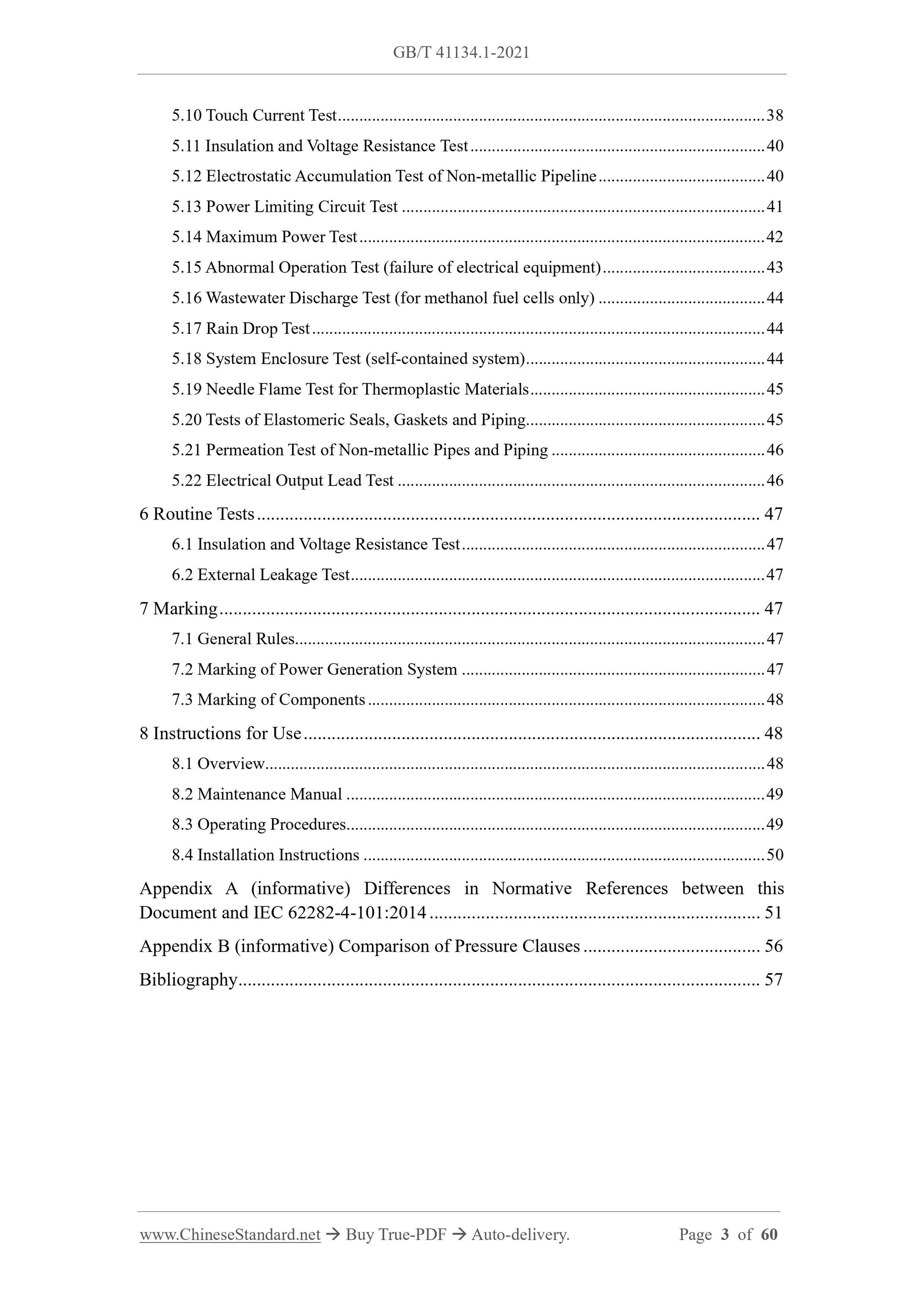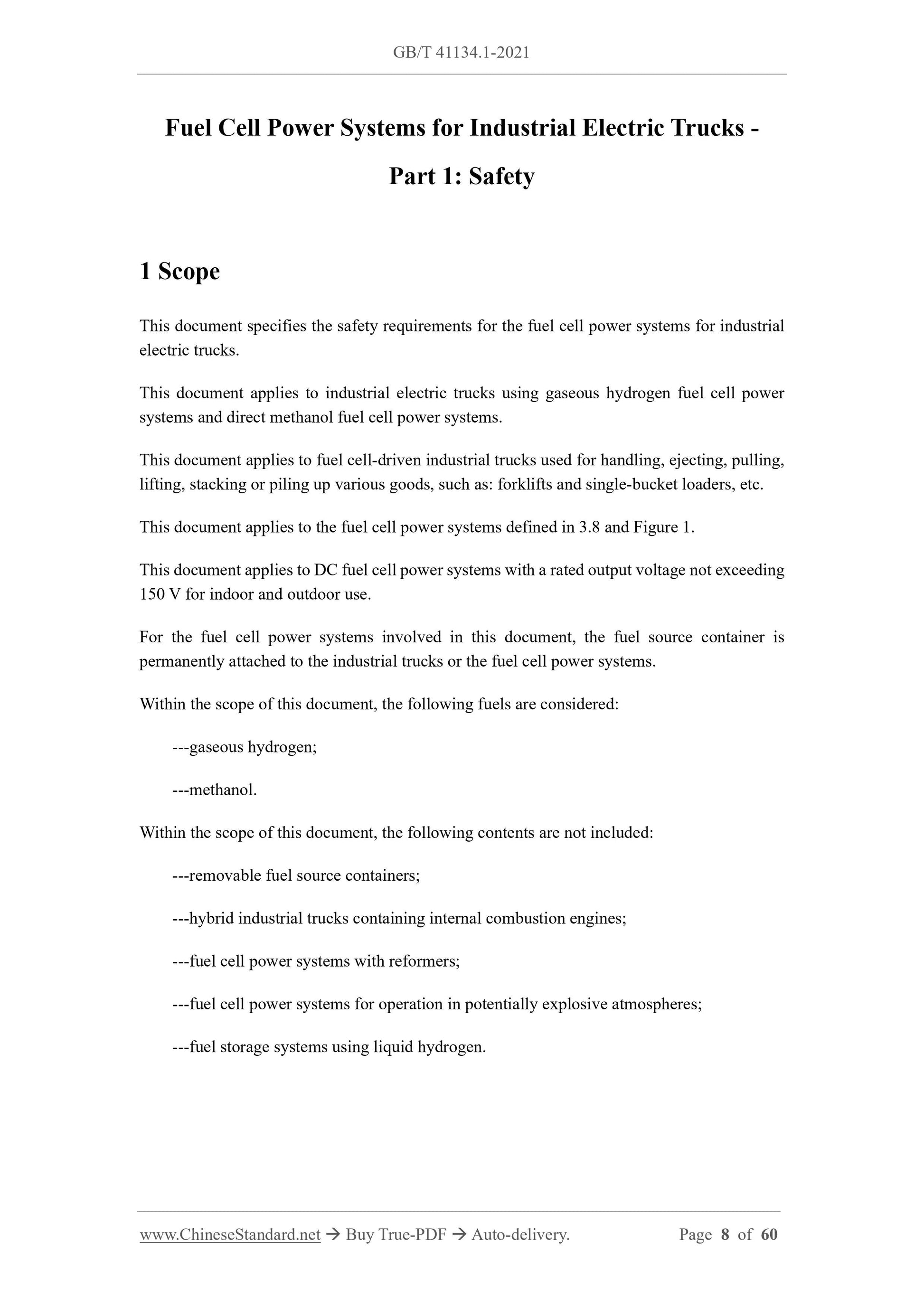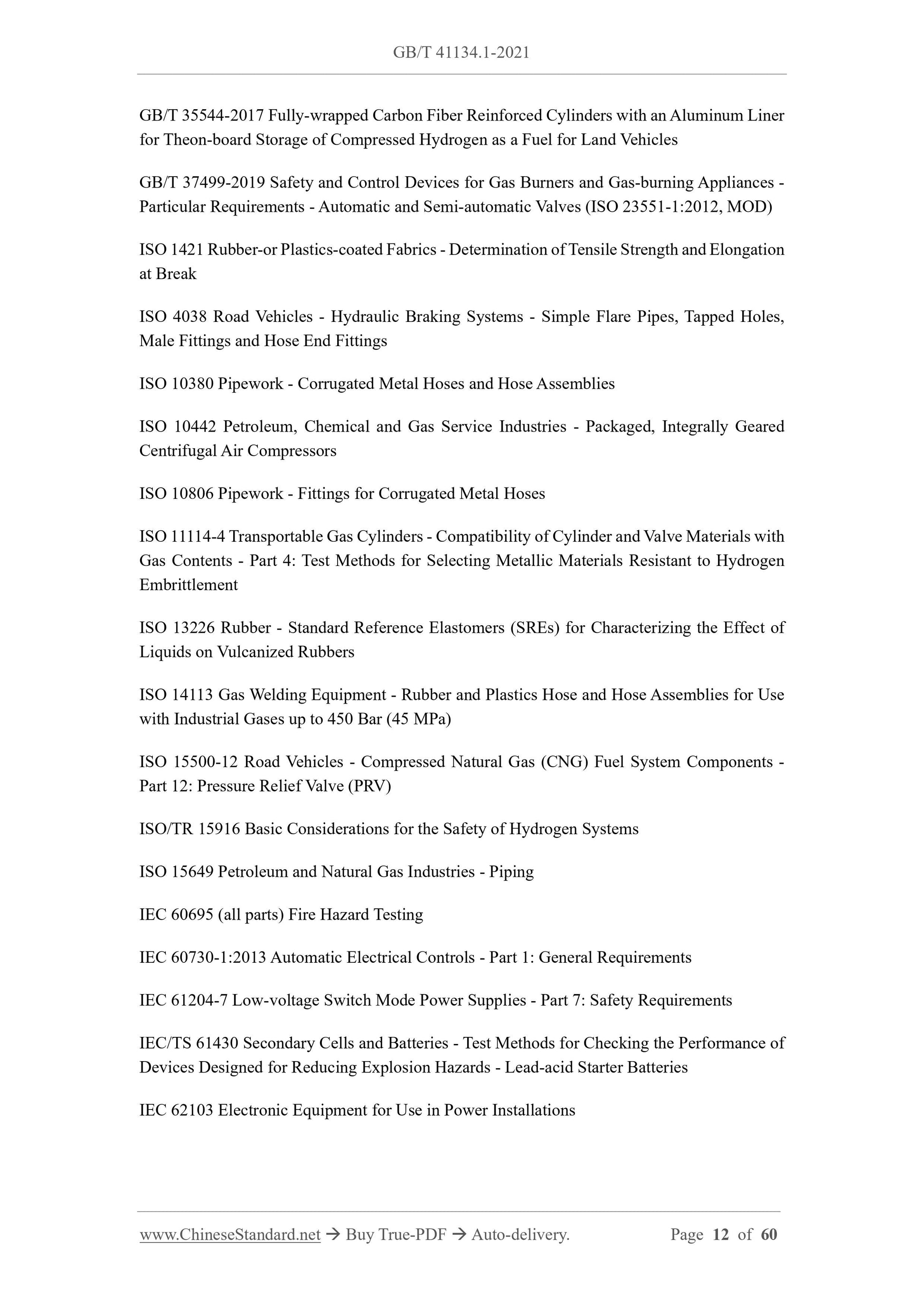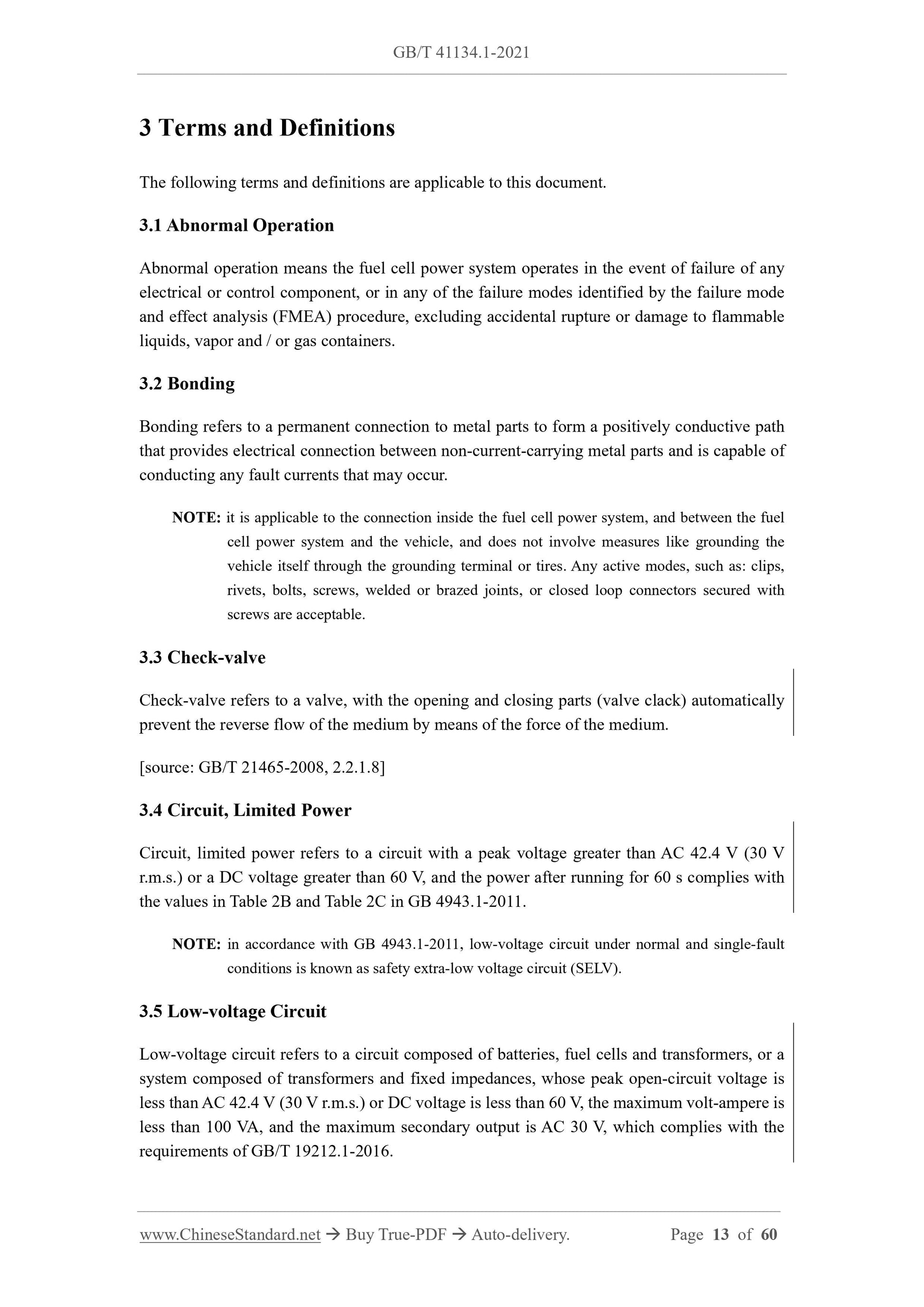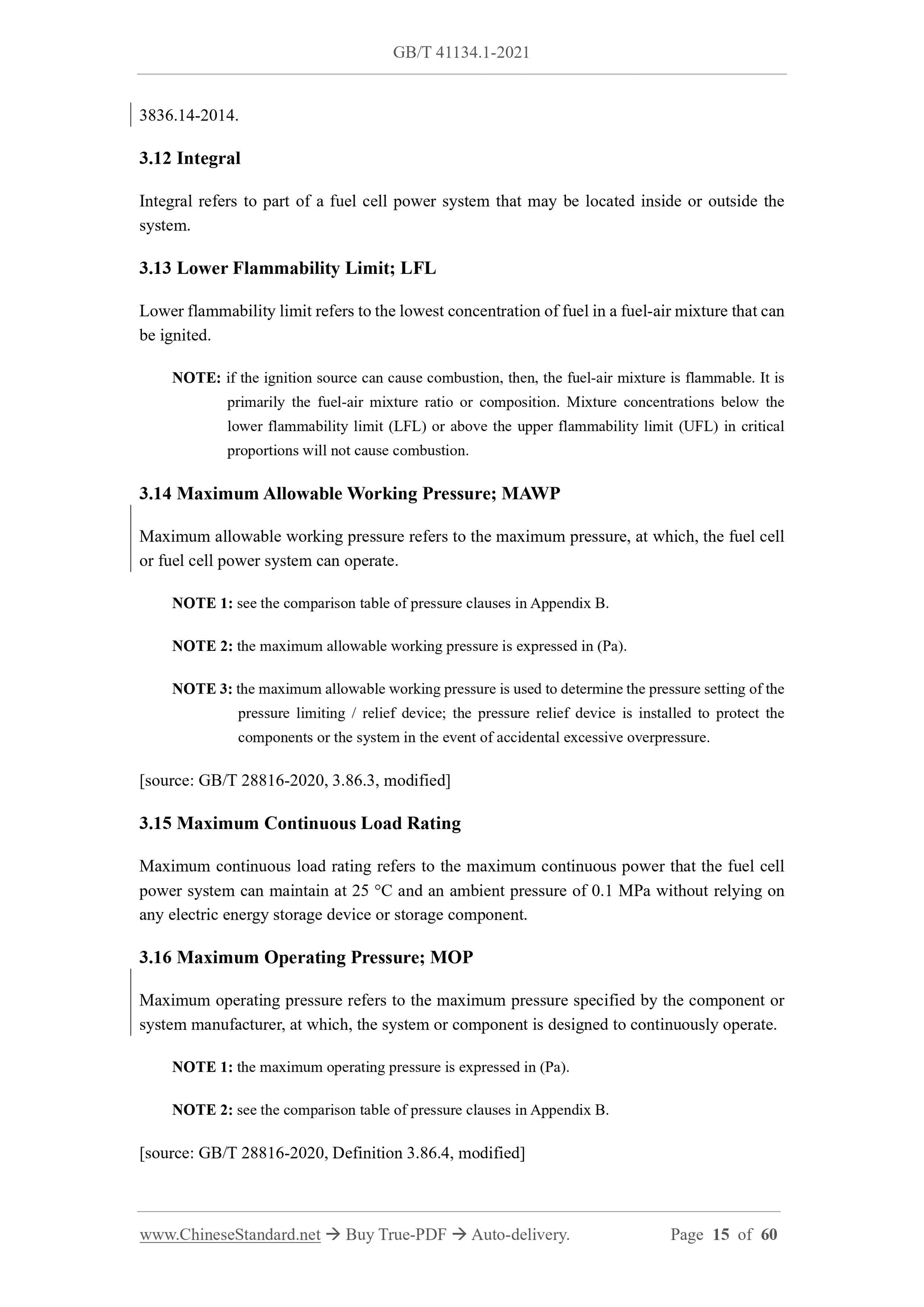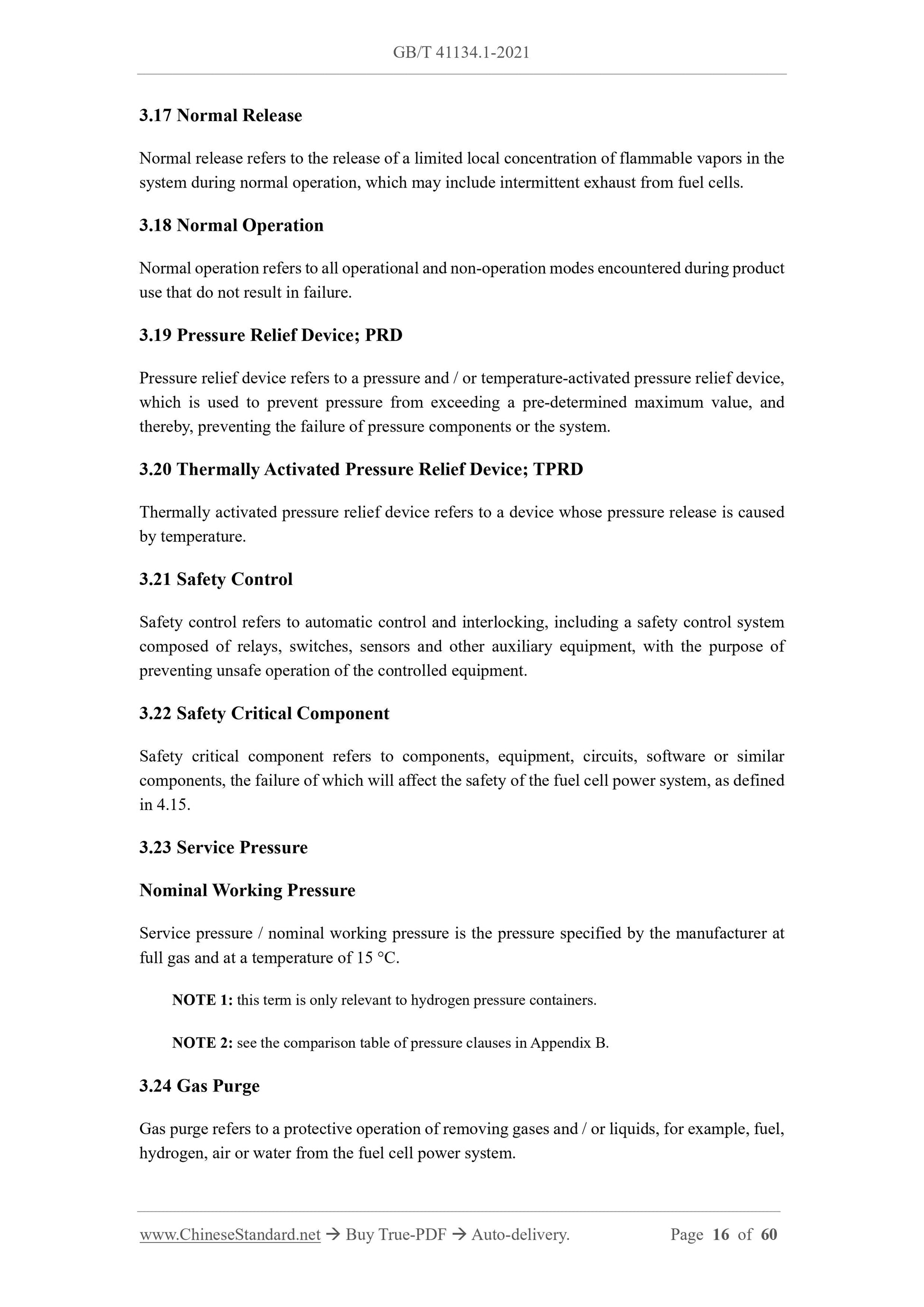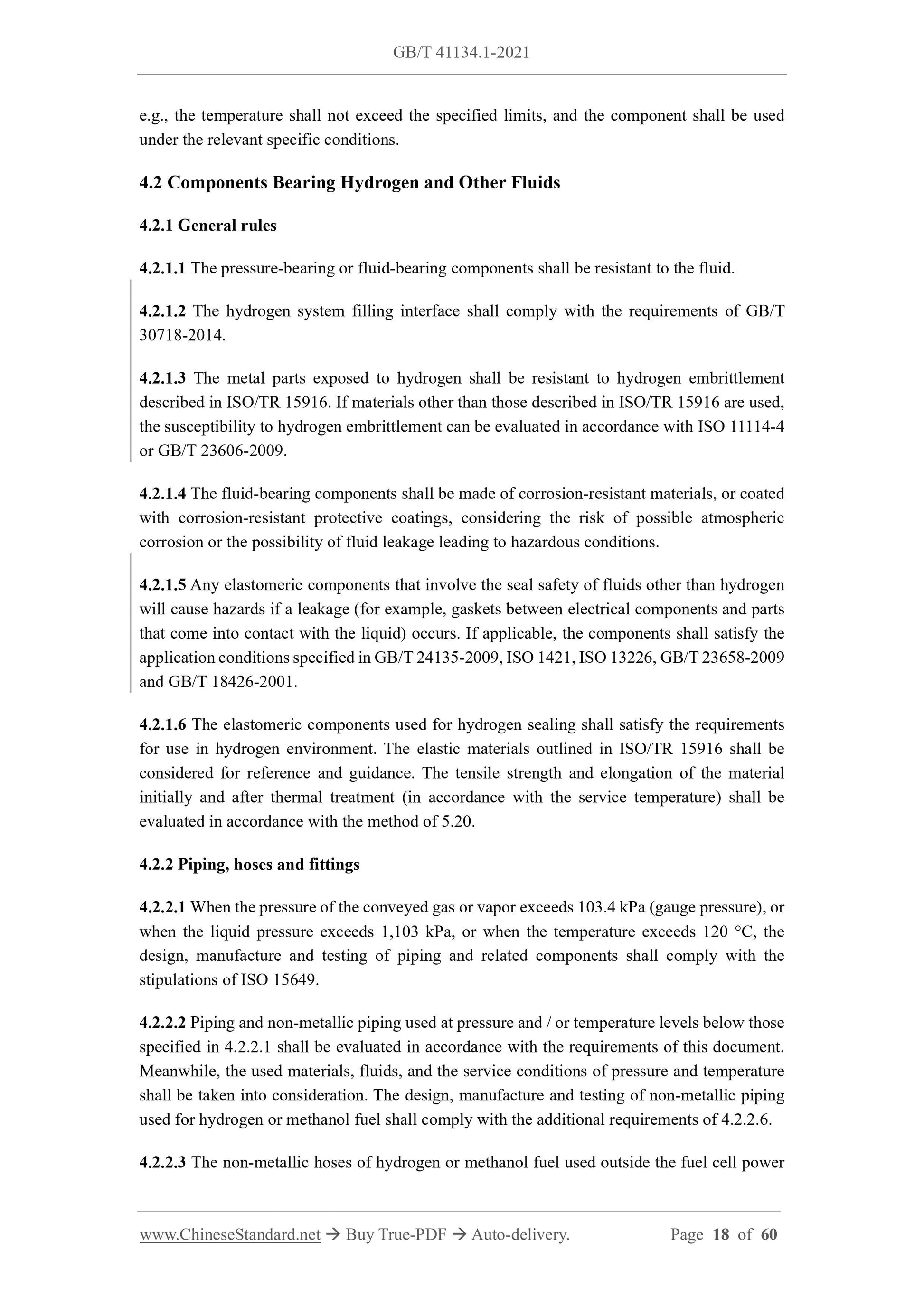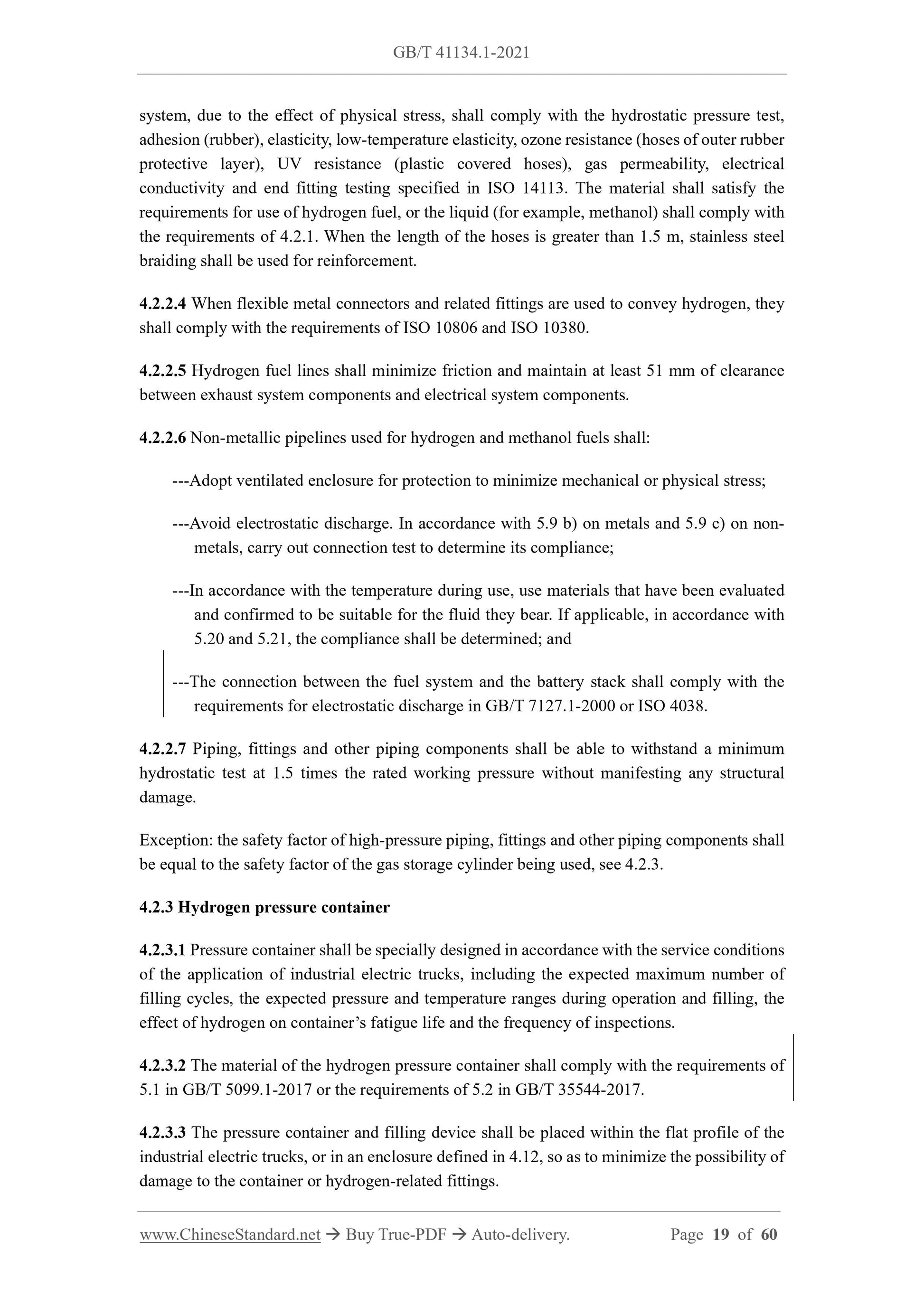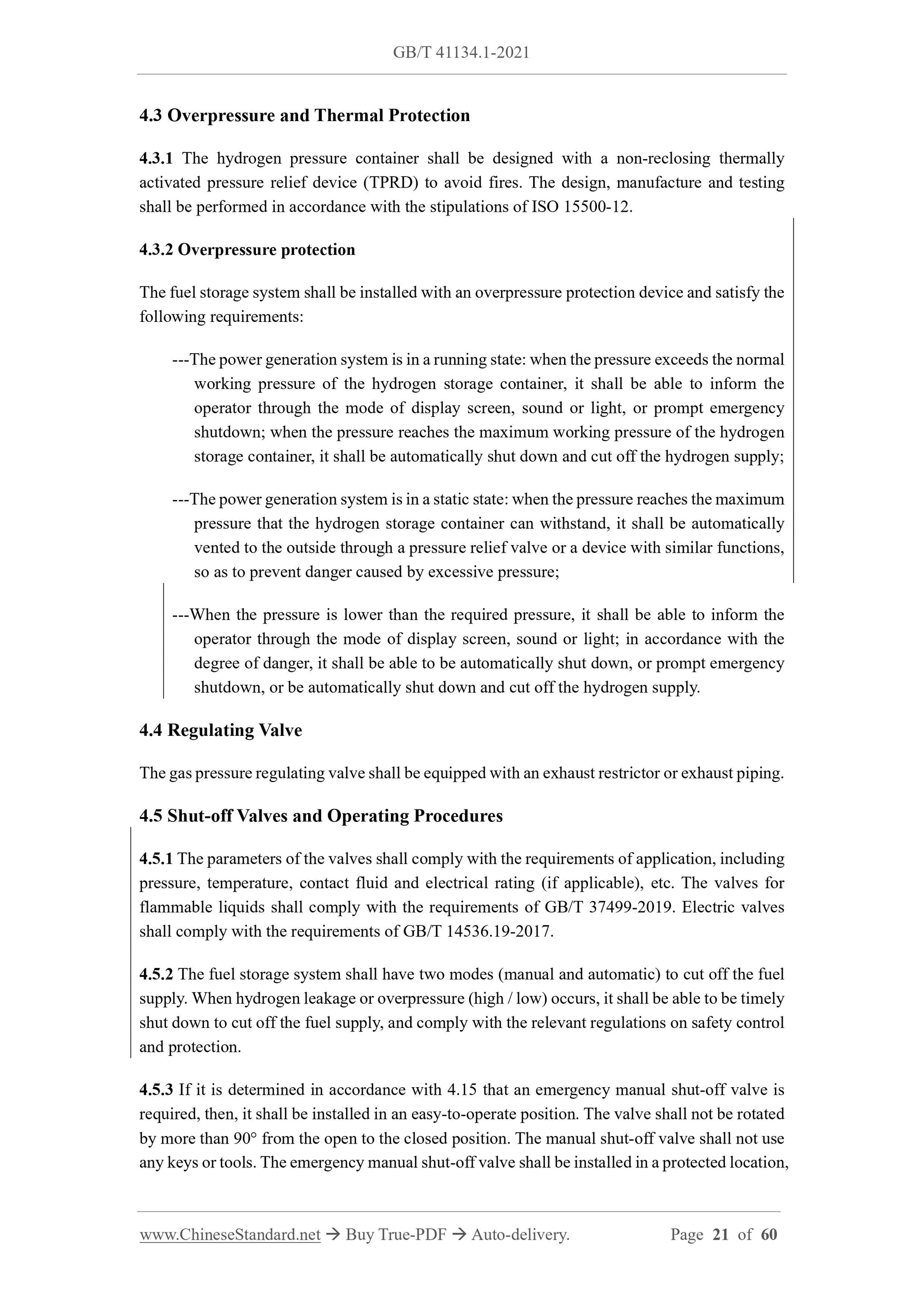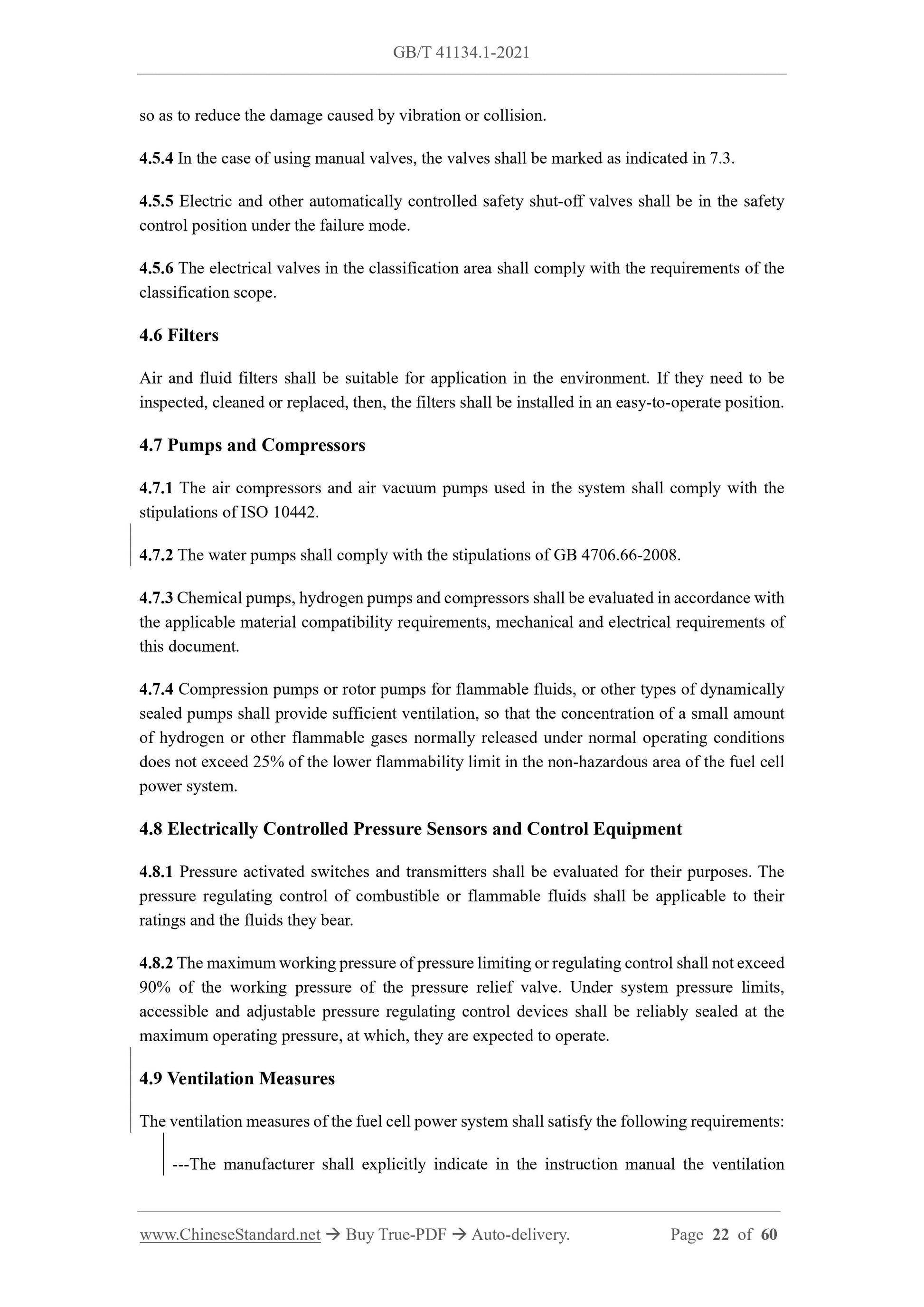1
/
of
12
www.ChineseStandard.us -- Field Test Asia Pte. Ltd.
GB/T 41134.1-2021 English PDF (GB/T41134.1-2021)
GB/T 41134.1-2021 English PDF (GB/T41134.1-2021)
Regular price
$605.00
Regular price
Sale price
$605.00
Unit price
/
per
Shipping calculated at checkout.
Couldn't load pickup availability
GB/T 41134.1-2021: Fuel cell power systems for industrial electric trucks - Part 1: Safety
Delivery: 9 seconds. Download (and Email) true-PDF + Invoice.Get Quotation: Click GB/T 41134.1-2021 (Self-service in 1-minute)
Newer / historical versions: GB/T 41134.1-2021
Preview True-PDF
Scope
This document specifies the safety requirements for the fuel cell power systems for industrialelectric trucks.
Basic Data
| Standard ID | GB/T 41134.1-2021 (GB/T41134.1-2021) |
| Description (Translated English) | Fuel cell power systems for industrial electric trucks - Part 1: Safety |
| Sector / Industry | National Standard (Recommended) |
| Classification of Chinese Standard | K82 |
| Word Count Estimation | 43,425 |
| Issuing agency(ies) | State Administration for Market Regulation, China National Standardization Administration |
Share
